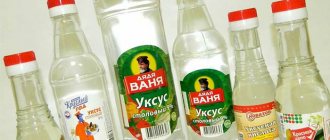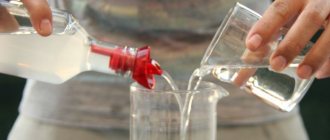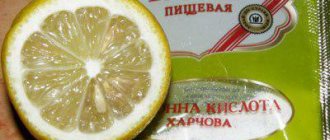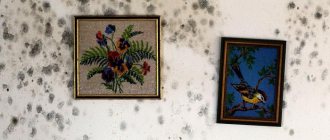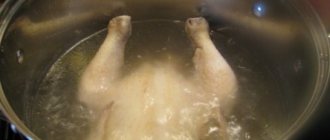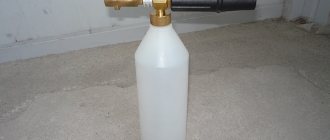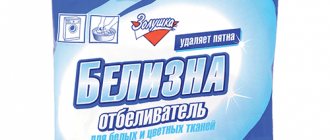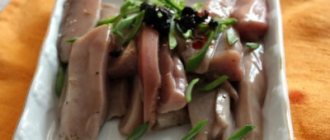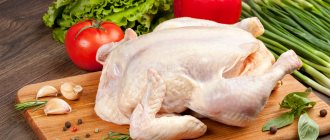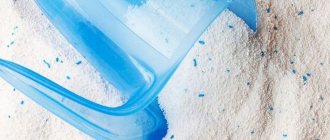With the arrival of autumn comes the time to prepare for the winter. And of course, in order to preserve all these twists for a long time, housewives use natural preservatives. And the most common of them is vinegar. True, some recipes require table vinegar, while others require vinegar essence. Not all housewives know what percentage of acid is in each of these products. Moreover, not everyone knows how one can be replaced by another. But this will help save not only time, but will also eliminate unnecessary costs.
How to dilute vinegar correctly? (examples + measurement tables)
There are several ways to make 9% vinegar from 70% essence, and for each of them you need to mix acid and water in a certain proportion.
The first method (the most accessible)
An option available to any housewife is the use of teaspoons and tablespoons, as well as cut glasses.
To dilute the required volume of a 9% solution, it is enough to specify in the table the required number of teaspoons (tablespoons) or faceted glasses of 70% essence and ordinary boiled (filtered) water.
This method allows for small permissible deviations from the given strength, but at the same time allows you to quickly, without additional calculations, obtain a product of the required dilution.
Second method (easy to remember)
An even easier option is to obtain 9% vinegar from a 70% concentrated solution - you just need to remember in what ratio you need to take water and vinegar essence.
Such dilution is always carried out in a ratio of 1 to 7, i.e. 1 glass (spoon) of vinegar essence is added to 7 glasses (spoons) of water.
Third method (most accurate)
For more scrupulous housewives, there is another (more accurate) way to obtain culinary seasoning with a strength of 9 percent.
To use it, you will need a small kitchen scale or measuring cup.
Let's say the recipe requires 100 ml of 9% vinegar, but we only have a 70% solution. How to make 9% vinegar from 70% vinegar?
In order not to calculate the values on a calculator each time, housewives can use ready-made data presented in the table.
How to dilute vinegar essence to 9% concentration
Or, if you really want to get the amount of ingredients for dilution yourself, you can use a simple formula:
X≈ 12.86 ml of 70% solution is required.
How much water do you need to add?
Y= 100 ml -12.86 ml,
Thus, when adding 12.85 ml of 70% essence to 87.14 ml of water, we obtain vinegar with a concentration of 9 percent, with a volume of 100 ml.
Fourth method (dilute to any concentration using tablespoons)
If you take 1 tablespoon of acetic acid as a base, then it will not be difficult to dilute it to any desired concentration using the same tablespoons. To do this, you need to have the following table at hand:
Fifth method (when you need to dilute all existing essence)
Well, if you have a certain amount of 70% acetic acid, for example, 100 ml, and you need to dilute it all to get a 9% solution, then you can use the following formula:
So, we get the amount of water that needs to be added: B = 100 ml * 70%/9%
Precautionary measures
- Acetic acid, especially concentrated acid (70% - 80%), should be kept away from children.
- It is also advisable to keep children out of the kitchen while preparing vinegar. Their insatiable curiosity to touch and try everything can lead to big trouble.
- Due to the sharp specific odor, when diluting large volumes of essence, it is better to open a window or vent.
- Be sure to label the containers so that your family does not mistakenly try this culinary seasoning in its “pure” form.
- If the essence gets on your skin, immediately rinse the area with water. And if you have very sensitive skin, it is better to wear gloves.
- When diluting a solution, add acid to water, and not vice versa.
We hope that you can choose the method that is most convenient for you, how to quickly and easily dilute 70% vinegar to 9%, or any other strength. Using these tips, you can easily calculate the concentration indicated in the recipe and use the resulting culinary seasoning to prepare tasty and healthy dishes that will delight your loved ones.
Table vinegar is often used to prepare marinades. Therefore, situations may arise where knowledge of how to obtain 9% vinegar from 70% acetic acid. To do this, just use a special table and follow a few simple tips.
How much vinegar is added to a two-liter jar of cucumbers?
The amount of acetic acid is selected depending on the type of ingredient added. There are basic recommendations for classic recipes that must be followed if you have no experience in making pickles.
How much 9% vinegar should be added per liter
The classic recipe for pickled cucumbers involves using one tablespoon of the ingredient per liter container. Below is a recipe for cooking with this vinegar concentration for the reason that it is most often used. Also, acetic acid is most often found on store shelves in a concentration of 9%.
The recipe is as follows, ingredients for a 2-liter jar:
- vegetables - as many as can fit into the container;
- horseradish and dill - enough to completely cover the bottom of the container;
- grape leaves (can be currant or cherry);
- 6 cloves of garlic;
- 2 tablespoons of 9% acid solution;
- optional – one teaspoon of mustard seeds.
For each liter of brine, add the following ingredients:
- 1 liter of water;
- a heaped tablespoon of salt;
- 2 level tablespoons of sugar
- 10 black peppercorns;
- two bay leaves.
It is important to choose young cucumbers, small and medium in size. Recommended varieties – “Mashenka”, “Crispina”
It is these varieties that best retain their taste after salting. They also have a dense consistency, which gives the cucumbers a good crunch. Before seaming begins, the dishes are prepared - jars and lids are washed and then sterilized in boiling water.
Next, take the cucumbers and wash them thoroughly in cold water. Greens are also washed - grape, cherry or currant leaves, horseradish, dill. The next step is to put greens in the bottom of sterile jars. We must not forget about the leaves of the trees, as they give a special taste to cucumbers and make them crispy.
For each two-liter jar, take 5-6 cloves of garlic. Pepper is added next. At your discretion, you can add a piece of chopped lettuce pepper, cut into squares. Next, the cucumbers are packed tightly into the jars. You should not fill the jar with them to capacity. The optimal level is up to the “hangers” of the can.
Next, the brine is prepared, poured in and seamed.
How much is required for a 70% solution
70% is a high concentration of acetic acid solution, so in this case a smaller amount will be required. There are different recommendations, but in most cases, more than half a tablespoon should not be added to 2 liters of liquid. A highly concentrated solution is more economical to use, so it should be used carefully and in small quantities.
How much vinegar essence should be added?
Essence is the most highly concentrated product. This is a solution consisting of 20% water and 80% acetic acid. Food essence is obtained by distilling a 5% solution, which is obtained naturally during the process of souring wine. Since this is the highest level of concentrate, it should be used in a minimum amount. An approximate calculation for a two-liter container for pickles is 1 teaspoon of essence.
How much apple cider vinegar will you need?
Apple juice is an excellent replacement for the classic ingredient. Apple cider vinegar is considered more beneficial, as it is rich in pectins and some vitamin and mineral compounds.
To determine the amount of ingredient used, it is recommended to pay attention to its concentration
For example, if the amount of acid is 9%, then 2 tablespoons are added (usually this concentration corresponds to a synthetic product, which is 2 times cheaper than a natural one). Natural apple solution varies in strength from 3 to 6%. What follows is simple math. Example: 3% is 3 times lower concentration, which means you will have to add 6 tablespoons per 2 liters of liquid. If 6% - then 4 spoons.
With balsamic vinegar
This ingredient is classified as a seasoning. It has a sour and at the same time sweet taste and is a natural product. Occurs as a result of fermentation in barrels of grape must. Of all the types, balsamic is considered the most useful. Calculation based on concentration is standard. This means that 4 tablespoons of a 6% solution is enough for a 2 liter jar of pickles.
Prepare 9% vinegar from 30%
Having figured out how to prepare 9% vinegar, let’s make it from 30%. To do this, you need to take a thirty percent product and dilute it with boiled water, the amount of which we will now determine.
According to the formula, you need to take one hundred grams of vinegar 30%, multiply this amount by thirty and divide everything by nine. From here we have: 100 x 30 / 9 = 333. From this figure you need to subtract one hundred (the amount of the original product). This means, in order to get nine percent vinegar from one hundred grams of thirty percent, you need to dilute the essence with two hundred and thirty-three grams of boiled water. As a result, we get three hundred thirty-three grams of 9% vinegar.
Thus, there is nothing difficult about how to prepare 9% vinegar from products of varying concentrations. The main thing here is to correctly adhere to the proportions indicated in the table. This product is very often used in cooking to prepare various dishes. It has a pungent smell and sour taste, but nevertheless gives the dishes some zest, making them more tasty and original. It is added to preserves, dressings and sauces, drinks, mayonnaise, and so on. People knew how to prepare vinegar back in ancient times. Then it was made from various berries and fruits. Today it can be purchased in every store, and is also easy to prepare yourself. And whatever the percentage of acetic acid in the final product, it will still benefit the body, since it has many beneficial properties.
Every housewife has a bottle of vinegar in her kitchen. But here’s the problem: vinegar of different concentrations is used for different purposes. Which vinegar is better to buy and how to dilute vinegar essence to the percentage you need, we will consider below.
How to cook
How to make 9% from 70% vinegar? Now we will tell you this small and simple recipe. When working with acetic acid, try not to inhale the emanating smell - it is very pungent
Be careful - it is important to maintain all proportions. Otherwise you'll have to start all over again
You also need to remember the safety rules. Such a corrosive, burning liquid should only be stored in a glass container. Make sure that the solution does not come into contact with your skin; if it does, immediately rinse the area with water. It is best to perform all manipulations with vinegar while wearing gloves and a gauze bandage - this will protect the respiratory tract and skin.
If you are well prepared, let's get started. So, how can you make 9% from 70% vinegar? You only need water and vinegar essence 70%. In order to prepare table vinegar, used in marinades and preservation, you need to mix 7 tablespoons of water with 1 spoon of essence
Make sure that the second component does not overflow - it is very important that all proportions are maintained. With this mixing you will get the required consistency.
Here's how to make 9% vinegar from 70% vinegar. Happy cooking!
It is impossible to imagine the modern world without one of the random inventions of mankind - without table vinegar. On store shelves you can most often find 9% vinegar and concentrated vinegar essence 70%.
But in various life situations, not only 9% vinegar is required, but also many other vinegar solutions of varying concentrations. From a saving point of view, it is easier to buy vinegar essence and dilute it depending on need.
It is better to use different types of vinegar for different purposes. There is natural vinegar, obtained by fermenting fruit and berry juices, and there is synthetic vinegar, obtained by distilling wood, oil, and gas.
The cost of natural vinegar is much higher, and so is its taste, so for cooking it is better to use natural varieties, but synthetic varieties are quite suitable for cleaning kitchen surfaces and removing stains.
| No. | Area of application of the solution | Permissible concentration |
| 1. | Cleaning the kitchen stove from grease, removing rust | 30% |
| 2. | Disinfection and stain removal from fabric surfaces | 10% |
| 3. | Marinades for long-term storage in hermetically sealed jars | 9% |
| 4. | Quick marinating of meat and onions | 8% |
| 5. | Quick vegetable marinades that do not require hermetically sealed without long-term storage | 7% |
| 6. | Extinguishing soda for baking flour products | 6% |
| 7. | Removing odors from lunch boxes, bread bins, refrigerators | 5% |
| 8. | Independent seasoning for boiled and fried meat (pork) | 4% |
| 9. | Dressing fresh vegetable salads, preparing homemade mayonnaise | 3% |
Main varieties
There are two main types of vinegar: synthetic or industrial (also called table vinegar) and natural.
Natural is obtained as a result of the natural fermentation of alcohol-containing products when exposed to acetic acid bacteria, and can be very diverse:
- wine;
- balsamic;
- fruit and berry;
- apple;
- alcohol.
The natural product contains, in addition to acetic acid, other fruit acids, esters, vitamins and minerals. However, its acidity, as a rule, does not exceed 6%. This composition makes the spice not only aromatic, but also very healthy.
Synthetic, in turn, is a product artificially created in industrial conditions. It is obtained by diluting the synthesized concentrated acetic acid. The latter is sometimes called ice (at a concentration close to 100%).
We get 9% vinegar from 70 percent essence
Want to create a site? Find Free WordPress Themes and plugins.
Vinegar is a popular seasoning that is used in cooking for marinades and pickles, and sometimes goes as an independent ingredient for dumplings and shashlik. On sale you can find natural and synthetic products, as well as high concentration vinegar essence.
Types of vinegar
Natural vinegar is produced by fermenting alcohol-containing liquids: grape or apple juice, fruit mixtures and even herbal infusions. Natural acetic acid is much more expensive and higher quality than synthetic acid, so it is used in small quantities to add a piquant taste and aroma to dishes.
Synthetic vinegar is most often found on store shelves. It is obtained by distilling industrial waste, which is why the price is low. Chemically produced vinegar is most often used for degreasing kitchen surfaces, treating plants against pests, and also for preparing marinades.
Acetic essence has the highest percentage of concentration - 70-90%, so it is not used in its pure form, but requires mandatory dilution for use in cooking and home cosmetology. Most often, housewives need 9% vinegar, obtained from 70% vinegar.
When is vinegar dilution necessary?
Vinegar concentrate is the most economical option for any woman. Since using it in its pure form is impossible, diluting the essence to 9% vinegar
and other concentrations are very often used for household and culinary purposes:
- to reduce high fever in children and adults instead of taking antipyretic medications;
- for removing stains on genuine leather products;
- for rinsing hair;
- to remove unpleasant odors in kitchen cabinets and refrigerators;
- for disinfecting the toilet;
- to remove scale and rust.
What are the solutions used for?
In cooking, home cosmetology and folk medicine, solutions of acetic acid of various concentrations are used. Housewives have long found out through experience which solutions give dishes original taste, and which will help in the treatment of colds and acne.
To make calculations easier, there is a table: how to dilute 70% vinegar to 9 percent
and other solution concentrations. The proportions for diluting the essence are the same for any measuring containers.
The table can be used to calculate 70% vinegar to 9% in
teaspoons or
tablespoons
, milliliters, parts. In any case, it is necessary to take the amount of concentrate for 1 unit.
The number after the colon shows how many similar containers of warm boiled water need to be taken for dilution.
One of the most popular is 9 percent vinegar, made from 70 percent.
IMPORTANT! When diluting, be sure to pour the essence into the water, and not vice versa!
Precautionary measures
Acetic essence is an aggressive substance that can cause burns if used incorrectly and if precautions are not followed. There are simple rules that must be followed to dilute vinegar from 70% to 9%, eliminating household injuries:
- Place the acid concentrate out of the reach of children;
- do not pour the essence from the original packaging into other containers to prevent accidental use;
- dilute the essence and use a highly concentrated solution (30%) only with gloves;
- dilute and store the resulting vinegar 9% from 70%
concentrate in a non-metallic container; - do not inhale vinegar vapors when diluting, so as not to get burns to the mucous membranes;
- Avoid getting the concentrate on open areas of the body and in the eyes; In case of contact, rinse with plenty of water.
There are several formulas for converting 70% vinegar into 9%, but there is no point in memorizing cumbersome calculations - this is not the most important thing for the housewife. It’s better to know as many proven recipes using vinegar as possible - from cooking to cosmetology, and this article will help you dilute it in the right proportion! Did you find apk for android? You can find new Free Android Games and apps
Did you find apk for android? You can find new Free Android Games and apps.
Composition and use
Traditional table vinegar has the following characteristics:
- It is a transparent mixture of distilled water and acetic acid in a concentration of 3–15%.
- It has a pungent sour smell and the same taste.
The acid used to make table vinegar is of natural or synthetic origin. It is obtained through microbiological reactions of fermentation of alcohol-containing products, from oil production waste, or as a by-product during dry distillation of wood.
It is believed that a product of natural origin is more physiological and beneficial to health. Artificial vinegar may contain residual aldehydes and other chemical impurities. However, it can be almost impossible to determine externally what a particular product was made from.
High-quality vinegar is colorless, has no sediment or any foreign odors, and does not contain substances other than acid and water.
The formula for table vinegar is simple: H2O+CH3COOH, combined in the required percentage. This liquid is universal and has no restrictions in use: it does not change its properties when heated or long-term storage, and can be used for food and household purposes.
Popular table vinegar is intended for cooking: adding a sour taste to marinades, sauces, appetizers, salads, meat and fish dishes, improving the structure of dough, preparing canned vegetables and meat. This liquid is used in the household to clean and disinfect kitchen utensils and various surfaces, get rid of unpleasant odors, and add to water when washing clothes to preserve color and remove stains. Table bite is a popular product for home cosmetic and medicinal procedures: rinsing hair, getting rid of bad breath, age spots, freckles, calluses, to make the skin whiter.
Along with the traditional 3–15% acid solution, table vinegar is often called balsamic or fruit vinegar: wine, apple, malt. This product, made from natural raw materials, may differ from ordinary table vinegar in smell and color. Wine and apple have an amber or reddish color and a slightly spicy aroma. In addition, real fruit vinegar contains B vitamins, ascorbic acid, carbohydrates, pectins and organic acids. It is no coincidence that such a product is considered more useful and deserves a place on the table. The concentration of fruit vinegar is 3–6%. It is used in food, added to ready-made meals and snacks, or for preparing homemade cosmetic masks and lotions. It is with this vinegar that it is useful to prepare dietary and medicinal drinks to improve blood composition, lose weight, improve metabolism and vascular tone.
It is not recommended to use fruit vinegar in the process of preparing hot dishes, in canning or for household purposes, as it quickly breaks down.
Despite the characteristic name - table solution, drinking this solution or applying it to open areas of the body in its pure form is prohibited. The acid contained in even a weak product, if it gets on the mucous membranes of the digestive tract, on the skin or in the eyes, causes irritation, and a 9-15 percent solution causes chemical burns and injuries. Before use, the liquid must be mixed with other products or substances.
People suffering from high acidity of gastric juice, peptic ulcers, gastritis, and inflammation of the duodenum should not consume vinegar and products containing it. Abuse of the substance leads to ulceration and bleeding of the mucous membrane of the oral cavity, esophagus, and disruption of the liver and kidneys.
Calculation formula
The essence is a strong solution of volatile substances. To obtain the concentration necessary for any purpose, you need to dilute the original substance with water.
Each case has its own proportions. One of the calculation options is based on the required amount of funds.
In this case, you need to do the following:
- Translate
required volume of product in grams. It should be taken into account that 70% acid contains 70% pure vinegar in 100 grams.Accordingly, in 100 grams of 9% of the composition there should be 9 g of pure substance.
- To calculate,
you need to multiply the required concentration of the solution (Cr.) with the final mass (Mit.) and divide the result by the concentration of the original product (Ki.p.).
If
take the required amount of essence as x, then we get the following formula x=(Cr.xMit.)/(Ki.p.)
If we consider the calculations using a specific example, then to obtain 100 grams of 9% product from 70% of the composition, the formula will look like this: x = 9x100/70 = 12.86 grams.
This option is convenient if you have a kitchen scale. From the obtained result it is clear that to obtain 100 grams of 9% product you need to take 12.86 grams of 70% concentrate and bring this volume to 100 grams.
There is another calculation option for how to prepare the composition of the desired saturation (x):
To do this, it is enough to know the required concentration of the solution (Kr-ra) and the concentration of the acid (Kk-ty). The calculation formula is as follows: x=(Kk-ty)/(Kr-ra).
In numbers, the calculation looks like this: x=70/9=8. This figure means the number of parts, one of which is a concentrate. To obtain 9% of the composition you need 1 part of 70% essence and 7 parts of water (1+7=8).
Sometimes a different algorithm may be needed:
If you need to find out the amount of water (Kv) required to dilute a specific volume of acid (Kk-ty) to the required concentration (Kr-ra), then use the following formula: Kv = x = (Kk-tyh70%)/(Kr-ra ).
To dilute 5 ml of 70% concentrate (teaspoon) for 9% product you need 5x70/9 = 39 ml.
You can check the correctness of the calculations using the previous formula with the definition of parts. For a teaspoon of concentrate in 5 ml you need 7 tablespoons of water (7x5=40).
If necessary, you can replace the 9% acid with a product of lower saturation. The calculations for such a replacement are extremely simple.
It is necessary to divide the required percentage of saturation by the available one and use the resulting result for the calculation.
If the recipe calls for a teaspoon of 9% product, but the kitchen only has 6% concentrate, then you need to take one and a half times more (9:6 = 1.5).
Accordingly, with 3% product available, the dosage must be tripled (9:3=3). The amount of water in the recipe must be reduced.
If instead of a tablespoon of 9% vinegar you had to take 3 spoons of 3% composition, then you need to take 2 tablespoons less water (2-1=1).
Note! Regardless of the chosen calculation formula, you must remember the safety rules. You need to use glass containers, avoiding acid contact with the mucous membranes.
You need to use glass containers, avoiding acid contact with the mucous membrane.
How to dilute vinegar 70 to 9 percent without harming yourself
For the procedure, you will need a glass container, into which water is first poured, and only then vinegar is added. During these manipulations, you must be very careful and prevent acid from getting on the skin of your hands, which will inevitably lead to a burn. If the acid comes into contact with exposed areas of the body, it can cause pain, severe redness, and even blisters.
If this does happen, you should react very quickly. Place the affected area under a not too strong stream of cold water for 7-10 minutes, then treat the area with soda or soapy water and rinse again. It is recommended to apply a damp, cool compress to a severe burn to completely remove the essence from the skin. When the pain subsides, the affected area should be lubricated with any vegetable oil (olive, sea buckthorn, flaxseed) or apply burn cream.
It is not difficult to dilute acetic acid 70 to 9, you just need to follow the same rules as when working with aggressive chemical detergents or cleaning agents:
- do not allow the substance to come into contact with the body, eyes, or other mucous membranes;
- do not breathe acid fumes;
- store pure and diluted solutions in a place that is guaranteed not to be reached by children.
Acetic acid dilution formulas
In cases where you do not trust cutlery too much, you can use a measuring cup and the known proportions of 1:7 as an accurate measure.
70 vinegar convert to 9 vinegar table
| Concentrated vinegar (70%) | Water |
| 10ml | 70ml |
| 20ml | 140ml |
| 50ml | 350ml |
| 100ml | 70ml |
Those who have mathematical abilities and are not used to relying on possible errors when diluting with kitchen utensils and measuring cups will find it easier to use existing formulas.
- The amount of acid available must be equal to the required concentration of the solution, multiplied by the final volume to be obtained and divided by the initial concentration of the liquid. This method is used to calculate how much essence is needed to ultimately obtain the required volume of table vinegar.
- To correctly calculate the proportions, decide exactly how much vinegar you need to get. After this, convert this volume into grams. To get this number, multiply the amount of concentrated vinegar essence you have by the percentage of its concentration and divide by the percentage of the solution concentration you want to end up with.
These methods provide accurate calculations, but are not suitable for everyone
For those who did not have mathematics, physics and chemistry among their favorite subjects, it is better to turn their attention to simpler and more understandable ways to create the necessary solutions. Or invent your own method that answers the questions: how to dilute vinegar or how to dilute acetic acid to the required proportions
How an ordinary housewife can obtain 9 percent vinegar from 70 percent acetic acid without using mathematical and chemical formulas or other complex methods will be helped by a list of proportions compiled long ago by experienced cooks and supported in practice by our great-grandmothers. Vinegar essence 70 converted to 9 vinegar table indicating the amount of ingredients in tablespoons / teaspoons. This option is suitable for everyone, as it is simple, accessible and does not require any unusual knowledge and skills.
Overdose
The effect of acetic acid on the human body is similar to the effect of hydrochloric, sulfuric or nitric acids. The difference is in the more superficial effects of the substances.
Approximately 12 ml of pure acetic acid is lethal to humans. This portion is similar to a glass of table vinegar or 20-40 ml of vinegar essence. Vapors of the substance entering the lungs cause pneumonia with complications. Other possible consequences of an overdose include tissue necrosis, liver hemorrhage, nephrosis with death of kidney cells.
Pollock fish cutlets without bread - Not only tasty, but also healthy!
Continuing the theme of healthier eating, I want to offer you a wonderful recipe for fish cutlets - minced pollock cutlets. Pollock is an excellent choice for fish cutlets: it is not an expensive type of fish, has few bones, no need to peel scales, and as for the beneficial properties (content of vitamins A, B1, B2, B9, minerals and trace elements) - it is in no way inferior expensive fish.
The only complaint about pollock is that the minced meat can turn out a little dry. For those who do not have enough fat content, you can roll an additional piece of lard into the minced meat or add a couple of tablespoons of olive oil to the minced meat. For fish cutlets, it is generally typical to take low-fat varieties of white fish, but at the same time increase the fat content with separate additives.
By the way, another original and “tasty” way to add fat content to dry fish (and not only fish) mince. Directly in the frying pan, put a piece of frozen butter into the already prepared cutlets, press it in so that it is inside the minced meat. During cooking, the butter will melt and give the dish a great creamy taste!
But, if we talk about the benefits of such a product as fish cutlets (and this is a dietary dish by all standards!), then you don’t need to add anything, no additional fats are required. This recipe also calls for a small amount of oil in the pan and the absence of bread and flour in the cutlets.
If you don’t have special cookware with a non-stick coating on which you can fry almost without oil, you can cook these cutlets in the oven, or steam them, whichever you prefer.
I still like the cutlets to look more browned; a small, slightly toasted crust won’t hurt, the main thing is to cook over very moderate heat and with a small amount of oil.
Compound:
- minced pollock - 1.3 kg.
- onions – 3 pcs.
medium size
- potatoes – 3 pcs.
- garlic – 3 cloves
- egg – 3 pcs.
- salt, pepper, spices - to taste
Step-by-step recipe for making pollock cutlets:
5 Fry in a small amount of oil, without a lid, over low heat until golden brown, turning during cooking. Fish cutlets cook very quickly. But you can further steam them after frying under the lid, adding a little water.
Let me remind you that in this recipe, for the sake of health benefits and increasing the “dietary value” of our dish, we excluded bread completely. But according to tradition, in the classic recipe for fish cutlets, bread must be added, and in fish cutlets, the bread is usually soaked in milk, and not in water. Still, fish cutlets require more gentle handling
What is balsamic vinegar eaten with: use in cooking
Thanks to its complex bouquet and pronounced fruity notes, balsamic is equally suitable for both savory and sweet dishes.
For example, panna cotta is decorated with strawberries pickled in vinegar. The seasoning is also included in sweet berry sauces for ice cream or dressing for fruit salads.
Balsamic also perfectly accents the taste:
- grilled meat
- seafood
- cheeses, especially young ones, like mozzarella or ricotta
- vegetables, both raw and grilled
- fish
- soups
- omelette
- chicken liver
- spaghetti bolognese
- mozzarella with tomatoes and arugula
- bruschetta
- marinara sauce
- pizza
- caprese salad
- Panna cotta
- carpaccio
- risotto
Three recipes for dressings with balsamic
- Basic – suitable for salads made from fresh vegetables and herbs. At 3 tbsp. l. olive oil take 1 tbsp. l. vinegar and stir. Season the dish right before serving.
- With pesto sauce. An excellent alternative to mayonnaise for those who adhere to healthy eating rules. In equal proportions you need to take balsamic and pesto, and then add twice as much olive oil.
- Garlic – ideal for protein salads.
To the base dressing, add a pinch of ground black pepper and salt, as well as a chopped clove of garlic. Let it brew a little and use as intended.
Rules for diluting vinegar to the desired concentration
Every time before preparing a dish or using vinegar essence in cosmetology or household use, the housewife is faced with the question: in what proportion should the concentrated solution be diluted to the desired state and how to dilute 70% vinegar to 9%.
Let's say you have an essence with an 80% concentration.
If we need a 3% solution, then we need to add 25 parts of water to one part of the essence. If it is necessary to obtain 6% vinegar, the ratio is 1:12.5. A 9% solution is obtained if the essence is diluted with water in a ratio of one to seven.
Using 70% vinegar essence requires different proportions when diluting it: how to dilute 70% vinegar to 9%.
To obtain a 3% vinegar solution, you need to add 22 parts of water to one part of the essence. And for a 6% solution - accordingly - the ratio is 1:11. You get 9% vinegar by adding 5.5 parts of water to part of the essence.
When diluting vinegar essence, which is unsafe to use, you must follow some rules. This aggressive liquid, which can cause burns and corrode tissue, should only be stored in glass containers tightly sealed with a stopper. You need to pour the essence from the bottle carefully, without splashing.
An important rule: pour the essence into water and never vice versa. When pouring, do not lean too far towards the container with concentrated liquid to avoid inhaling harmful fumes.
Cooking, medicine, home cosmetology, housekeeping - in all these areas of our lives, vinegar plays an important role and the rules for handling it should be familiar to every housewife.
A bottle of vinegar will always come in handy in the kitchen of any housewife. Often there may be several varieties available at once. This is due to its wide demand in cooking. Vinegar is added when canning foods, to certain types of dough as a leavening agent, and when creating all kinds of dressings for sauces and salads. It also finds application directly in everyday life: with its help, it eliminates unpleasant odors from various surfaces and removes scale from the kettle. Sometimes you need to make 9% vinegar from concentrated 70% vinegar. Some tips and a table will show you how to do this.
Cooking process
Before you start diluting the highly concentrated essence, you should boil regular drinking water and then cool it. Next, mix two different liquids. This must be done based on what kind of solution you need to get. If 3% table vinegar is required, then 10 parts of water should be added to part of the original 30% raw material (for 70% - 22.5 l), if 6% - then 1 to 7 (at 30%) and 1 to 17 (at 70 %). If a 9% solution is needed, then the proportions will look like this: 1 to 3 (with an initial solution of 30%) and 1 to 7 (at 70%).
By following these diagrams, you will get real table vinegar. You can regulate how many percent of the solution is required for certain purposes. This product can be stored in the refrigerator or at room temperature.
In the kitchen you can’t do without a measuring cup, a kitchen scale, and, for some time, a calculator. After all, if 20 years ago there was only classic 9% vinegar on sale (aka table vinegar, acetic acid, also known as E260), then today there is nothing in supermarkets - essence, wine, apple and rice vinegars... Is it possible to use all these products for home canning? Of course. But what if your recipe calls for table vinegar, but you have essence? Calculate the ratio you need. I will tell you how to calculate the amount of vinegar and essence.
